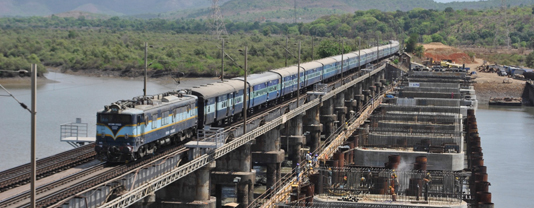Civil works already underway along various sections
Rail transport, both freight and passenger, is a mainstay of the Indian economy and daily life. The network, built over 150 years ago, reaches out into every corner of the country but is in need of radical reorganization if it is to sustain the tumultuous growth which has catapultedIndiainto the upper circles of the world’s economic powers.
Freight and passenger transport, which operate in different ways, currently coexist on the same lines, but in terms of traffic these lines have reached saturation point. One of the main projects for freight transport (for passenger services the construction of high-speed lines is also being taken into consideration) is to build new lines with special technical characteristics dedicated exclusively to freight. To reach this aim, the Indian government has set up a special company, the Dedicated Freight Corridor Corporation of India, whose job it is to design, build and future running and maintenance of the new main lines. We met up with the company’s Managing Director, Mr. R.K. Gupta, to get the full picture of this highly ambitious program.
Railway Engineering: India is a huge and complex country. First of all, could you give us a brief description of the Indian rail network?
R.K. Gupta: The first railway built inIndia dates back to 1853 when theBombay to Thane line was built. More recently, in 1951, the system (which in the meantime had developed and spread throughout the whole country) was nationalized and united under a single governing body, the Indian Railways, thus becoming one of the biggest rail networks in the world. IR manages both the long distance rail links and the suburban rail systems thanks to a system which includes broad, metre and narrow gauge lines. On 31 March 2012 the overall extension of the network included 65,000 km of lines (for a total track length of 115,000 km) and 7,500 stations. Thirty-four percent (22,224 km) of the lines are electrified and these carry over 50% of overall traffic. The overhead line has been powered by a 25 kV AC electrification system since 1960.
(Photo courtesy of DFCCIL)
Full article is available only for registered users.
Click the link below to download pdf version of Railway Engineering
